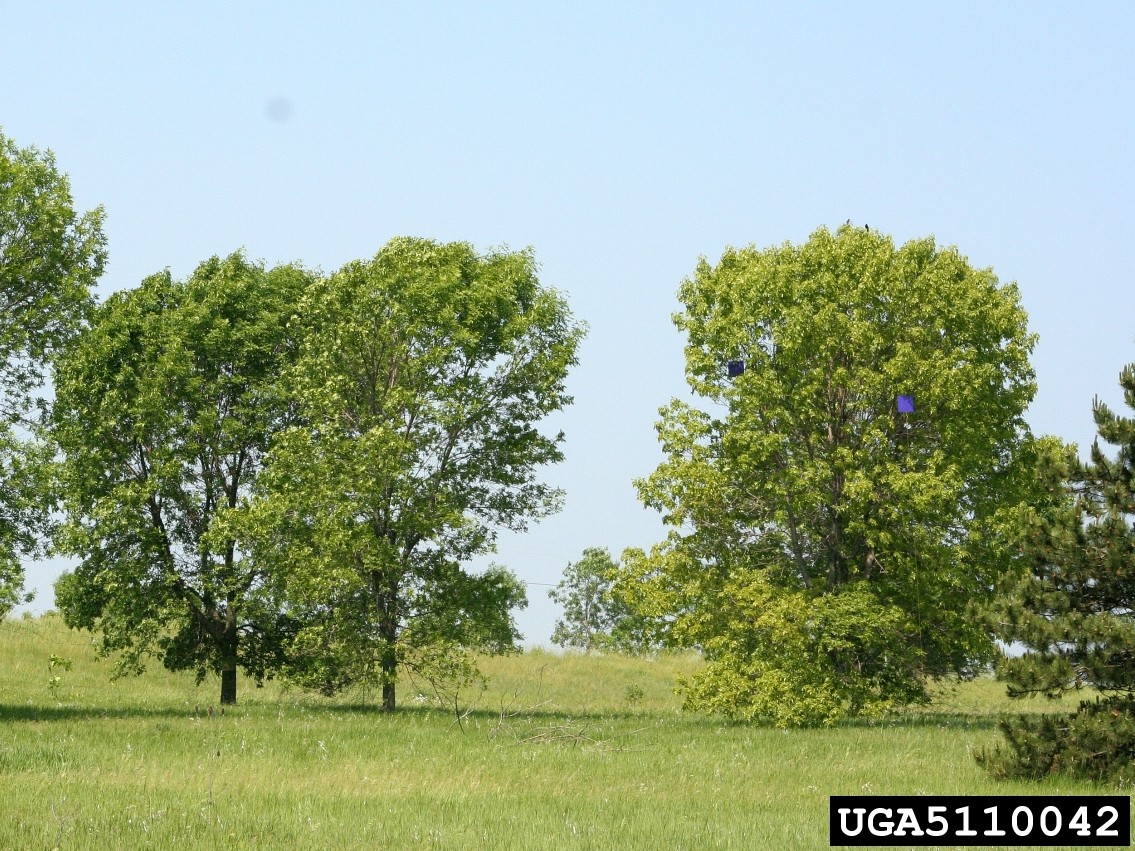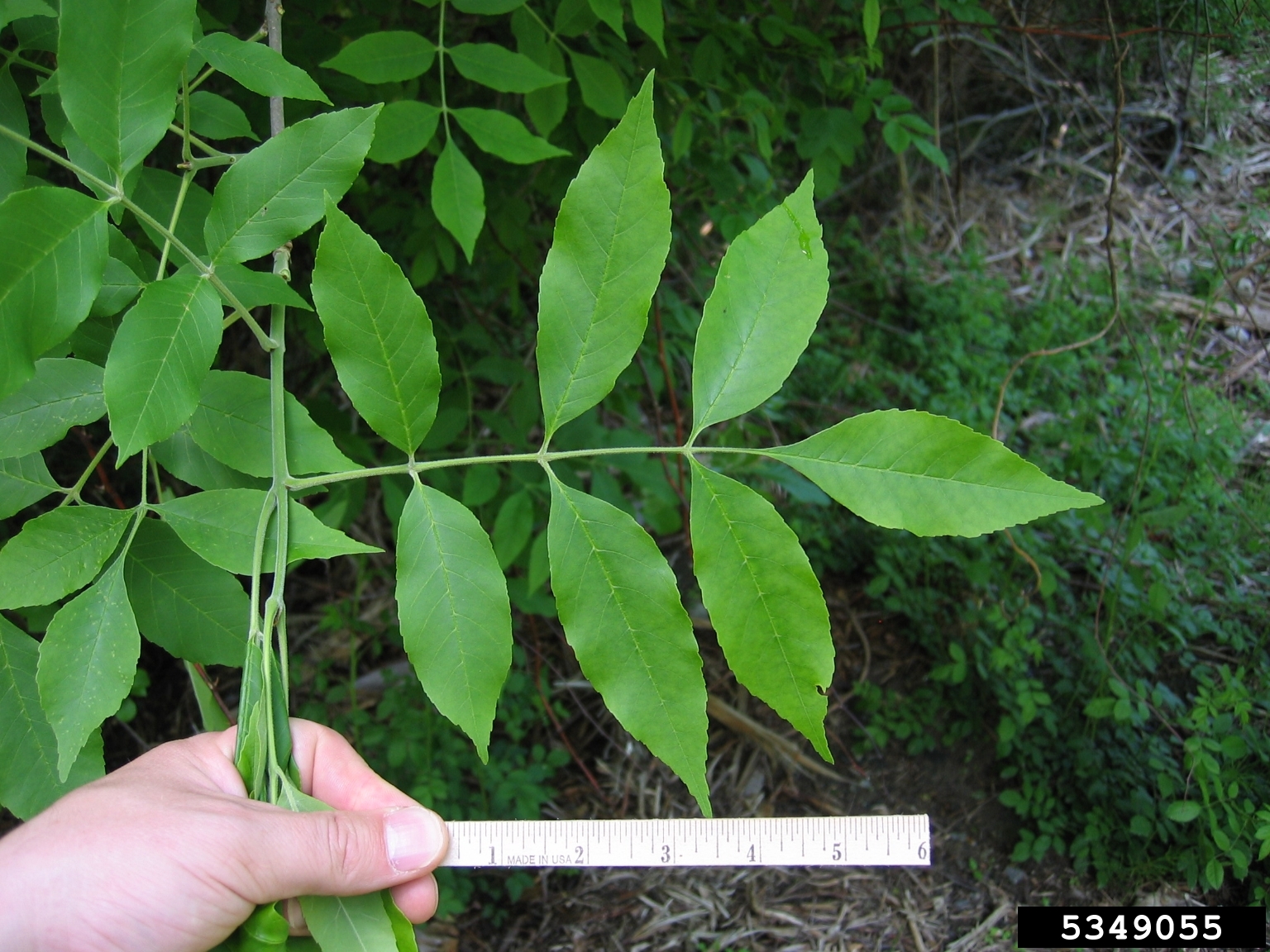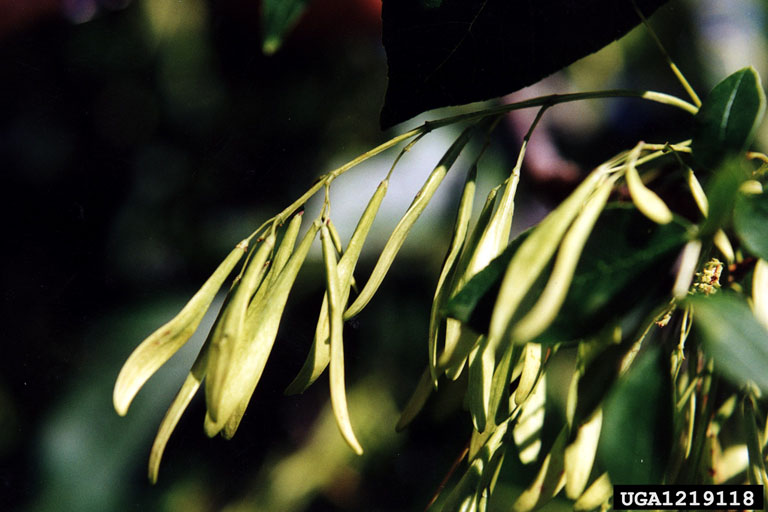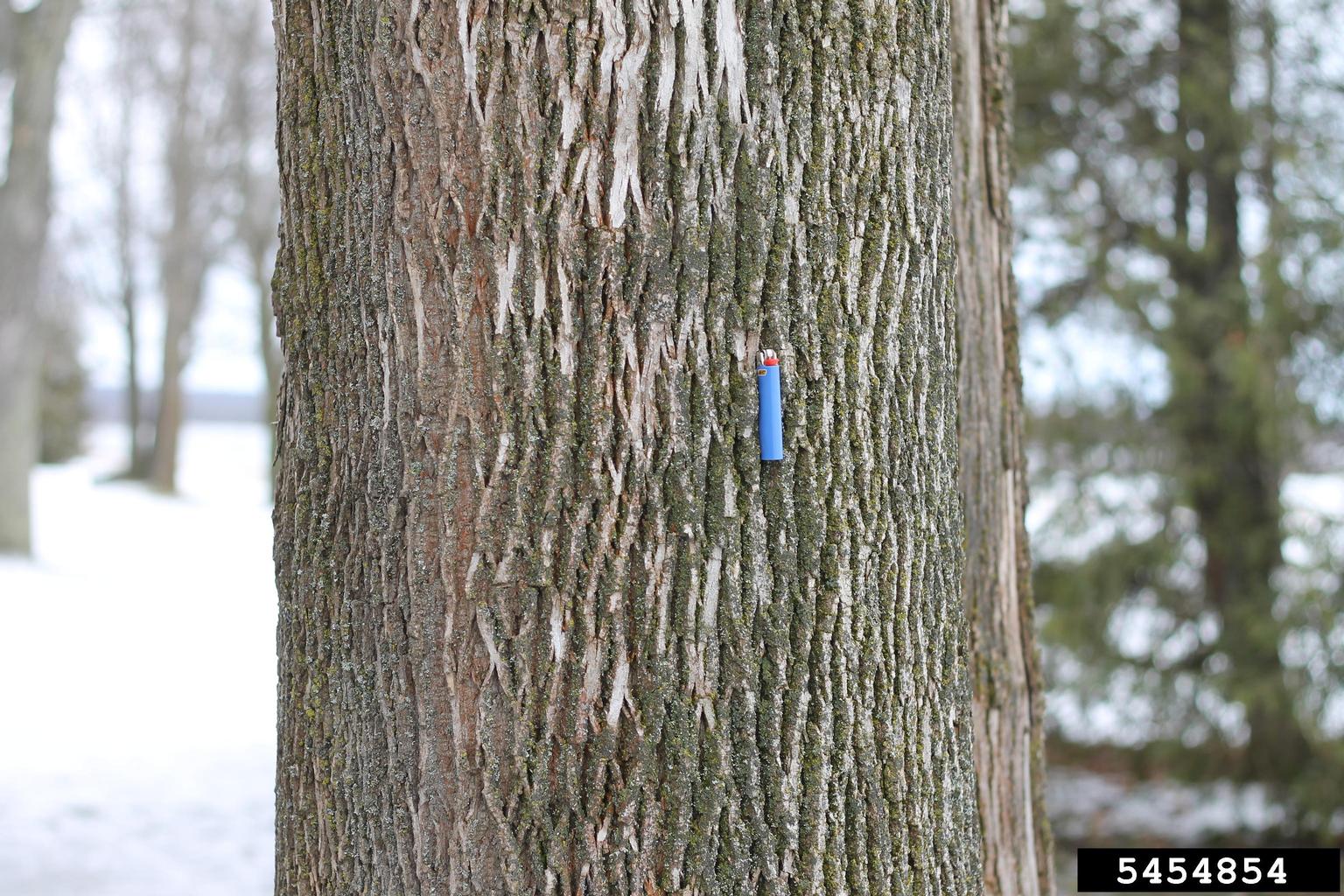Tree Highlight: Green ash
Green ash
Fraxinus pennsylvanica (Family Oleaceae)
The pinnately compound green ash leaf
The basics
Green ash (Fraxinus pennsylvanica) trees used to be everywhere, throughout eastern forests and widely used in urban areas and landscapes. But when the invasive emerald ash borer (EAB) was accidentally introduced to the U.S. from Asia in 2002, it caused big problems for all species of ash. EAB killed millions of ash trees, including green ash, changing how our forests look, grow, and function. Immature EAB larvae feed beneath the bark, forming extensive tunnels and eventually killing the tree. Researchers are working hard to find ways to help save our remaining green ash trees because they are so important to our forests. Click here to learn more about the EAB!
Did you know?
- Green ash is the fastest growing of all the ash species and can grow up to 70 feet tall. In some southern areas, they can grow to 120 feet.
- The scientific name of green ash is Fraxinus pennsylvanica. Fraxinus is Latin for “ash” and pennsylvanica means “of or from Pennsylvania.” The green ash received this name because early botanists first named trees after where they found them, referring to their discovery of green ash in Pennsylvania.

Green ash can grow more than 70 feet tall!
The fruits of green ash, called samaras, are winged seed pods
Wildlife
- Green ash seeds are a yummy snack in autumn and winter for birds like quail, turkeys, cardinals, and finches. The trees also make cozy nesting sites for Eastern screech owls, Cooper’s hawks, and ruffed grouse.
- Caterpillars of the tiger swallowtail and the brown-headed ash sawfly love to munch on green ash leaves. Tiny ash flower gall mites make little brown clusters around the flowers and lots of scale insects use green ash trees for food. While it’s rare to see the shiny green EAB adults, you can spot their winding larval tunnels just under the bark.
Uses
- The wood is strong yet bendable, making it great to use in furniture, tool handles, and baseball bats. Louisville Slugger made these strong, homerun-hitting bats popular among baseball players.
- Native Americans used the bark as a red dye, and as material to weave baskets. The inner bark was used in tea to treat stomach cramps and rubbed on skin to soothe insect bites. They also used the wood for bows and arrow shafts because of its strength, hardiness and high shock resistance.
Bark of a large green ash
Benefits
- Over a 20-year period, a healthy green ash with a diameter of 20 inches will offset 6,227 car miles worth of CO2, absorb enough stormwater to fill 1,967 bathtubs, and remove an amount of pollution from the air – in gaseous and particulate form – equivalent in weight to 121 smartphones! Learn more at: https://mytree.itreetools.org/
Green ash Tree of the Week video
By University of Kentucky Forestry and Natural Resources Extension.
Click to watchContact us: ufi@uky.edu
Images sourced from forestyimages.org




